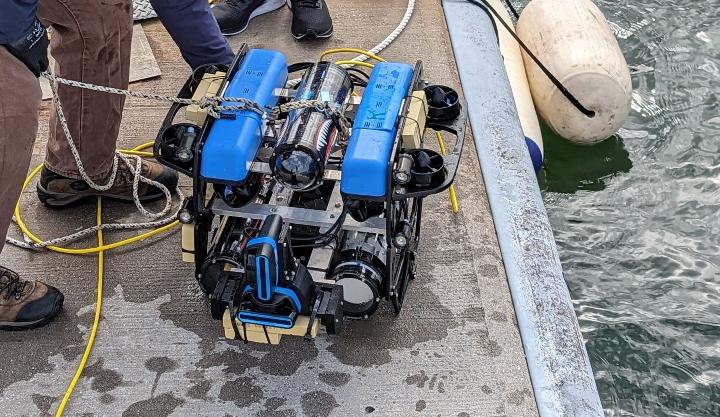At Steven's Institute of Technology, scientists have devised an original approach to enhance underwater situational awareness, their method involves utilizing Oculus multibeam imaging sonar technology to create advanced 3D reconstructions.
By affixing two Oculus sonars orthogonally on a Blue Robotics BlueROV2 platform, they've engineered a unique system that offers a cost-effective and efficient substitute for profiling sonar for mapping underwater environments.

Building Detailed 3D Images
Placing two Blueprint Subsea Oculus sonars orthogonally on a Blue Robotics BlueROV2 platform, the scientists created a system that presents an effective and economical option for producing 3D imagery. One Oculus sonar focused on capturing data across the horizontal plane to measure range and bearing, while the other targeted the vertical plane to evaluate elevation. Combining the data from this stereo pair of sonars enabled the team to create a detailed 3D point cloud, facilitating the successful mapping of a congested underwater landscape.
The researchers utilized the high-speed towing tank at the Stevens Institute Davidson Laboratory as a test environment, where they submerged a specially designed object resembling a blow-out preventer to serve as an inspection target. Each sonar gathered data from distinct planes, amalgamating these observations to form a real-time reconstruction of the object within the tank. Following these promising laboratory trials, the team proceeded to field experiments, putting their system to the test against the challenged of a real subsea environment.
The Oculus’ compact form factor was highly beneficial as it meant the pair of sonars could be successfully integrated onto the small inspection-class ROV.
The Impact on Subsea Industries
This breakthrough has the potential to revolutionise subsea industries such as offshore wind and fish farming. The development of an affordable, advanced Autonomous Underwater Vehicle (AUV) with the capability to execute complex underwater inspection and maintenance tasks could significantly improve efficiency, safety, and cost-effectiveness in these industries.
In conclusion, sonar technology, particularly multibeam imaging sonar, has emerged as a crucial solution for enhancing situational awareness and underwater imaging. The innovative work carried out by the scientists at Stevens Institute in utilising multibeam imaging sonar in conjunction with advanced perceptual algorithms is a remarkable development. It has the potential to transform the way subsea inspections are conducted through offering a cost-effective, efficient, and safe approach for various industries operating in the underwater environment.
Read the Full Article in ON&T Magazine >